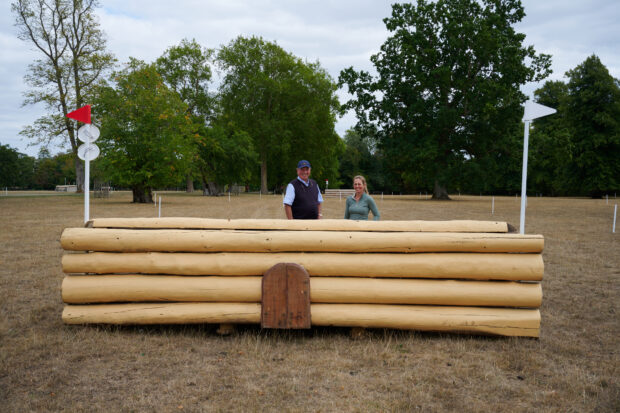My family’s reactions to me trying out vaulting for an H&H feature were hilariously mixed.
My husband John feared he might have to go on our honeymoon on his own if I injured myself — so he just kept saying: “Don’t fall off.”
In contrast, my Mum wanted to come along. As she’s pretty good at hairdos and having a fancy hairdo was probably the only part of vaulting I was going to be competent at, I decided “Take your parents to work day” was definitely allowed.
So we set off together to Julie Newell’s Warwickshire stables, where I had a fantastic time trying out vaulting with the help of two members of Julie’s 10-strong elite squad, teenagers Katie Hirst and Dolly Haynes.
Mum made herself useful by holding Boris, the horse we were vaulting on, while Julie was helping us out planning a routine on the barrel.
“She’s been holding my ponies for 30 years, so she’s definitely qualified to do that,” I commented.
Afterwards, Mum asked whether if I had happened on vaulting earlier, I might have grown up to be a vaulter rather than an eventer. Maybe. Maybe not.
On the downside, I’ve never been the most flexible or good at this sort of thing — I was thrown out of gym class for general lack of talent and ballet teachers nationwide are probably grateful I was never inflicted on them.
But I love the theatricality of vaulting — my hobby is backstage work in amateur dramatics and with some vaulters performing to musical theatre tunes, there’s a lot of crossover — and it’s incredible to watch.
The other thing that really appeals about vaulting is the teamwork — I’d love to be part of Julie’s happy vaulting community.
She became involved in the sport in 1991, when her 10-year-old daughter Emma saw a vaulting display and wanted to try it. Son John was soon joining in and now Julie’s grandchild is one of her 82 pupils.
Katie and Dolly, the two vaulters who helped with my taster, are aiming to compete as individuals and together in the pas de deux at the junior World Championships in Ermelo, the Netherlands, in 2015.
Dolly has been vaulting for five years and rode before that. Katie, who has been involved for six years, has never ridden — she decided to give vaulting a go when a friend was trying it.
Julie has four vaulting horses, plus a pony who the younger children vault on. During my session, we used Romantic — Boris to his friends — a 17-year-old who competed up to grand prix level in dressage with Ceri Shepherd before Julie bought him two years ago.
Ceri is a physiotherapist and still treats Boris at least every five to six weeks. Vaulting horses can get tight muscles through their backs — an occupational hazard of carrying up to three people performing complicated lifts and jumps.
Although vaulting in competition takes place on the lunge on the left rein, Julie’s horses do an equal amount of work on the right rein. And they have a varied life, going out in the field every day and doing ridden dressage, hacking and polework as well as being lunged for vaulting.
Vaulting is an incredible team sport — the athletes are so reliant on each other when they are doing lifts and jumps in a pas de deux or squad competition, with two or three of them on the horse simultaneously.
They learn together in group sessions, help each other and have fun together — this year they had a camp at Julie’s yard, sleeping in tents. And when Julie’s team were selected to represent Britain at the 2010 World Equestrian Games, the vaulters and their parents put on a mammoth fundraising effort to amass the £20,000 or so needed for the trip.
Would you like to be a vaulter when you grow up? In fact, don’t wait to grow up — Julie’s pupils are aged two to 32, so don’t delay.
Don’t miss the full article about trying vaulting for the first time in the 1 January issue of Horse & Hound magazine




